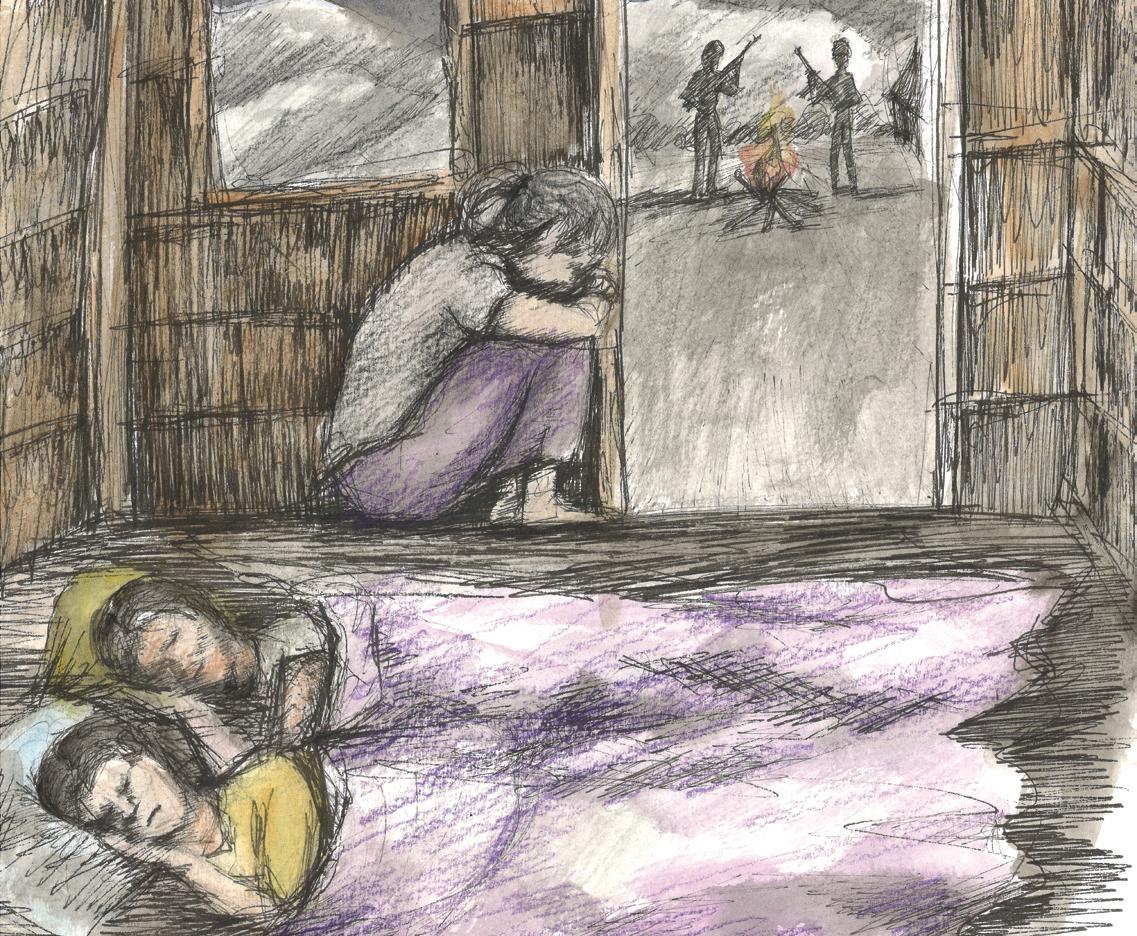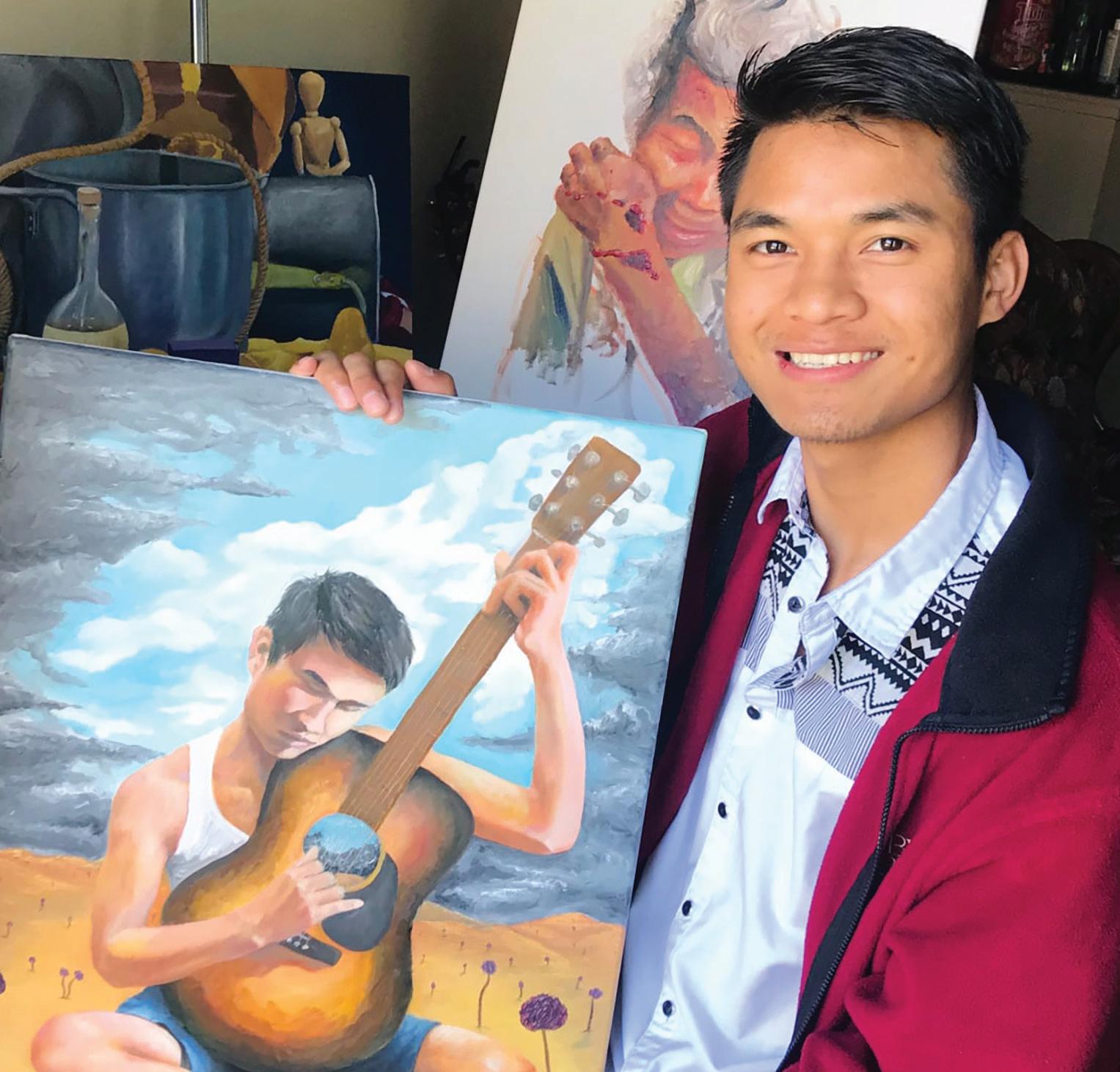
4 minute read
Educating through Art
By Crystal Pennington Refugee Language Project

As a boy, Josh Van Thang (BFA 22) often sat in the cold morning air and drew on the large boulders outside his home. Using charcoal from the fire pit or vines he’d collected from the fields that had been burned for farming, he would sketch as the sun rose over his village, warming the people and the land.
Living in the mountains of Chin State in Myanmar, Van had never heard of Leonardo DaVinci, Andy Warhol, or Georgia O’Keefe. When he was a teenager, his family fled to Malaysia to escape the military conflict in Myanmar. It was there Van discovered the idea of creating art for a living.
As Van completed his BFA at ENMU, he was approached by the Refugee Language Project in Amarillo, Texas, to illustrate stories as part of the organization’s Heritage Language Storybook Project. Van was eager to provide artwork for a story they had collected from a woman named Naw Klein.
Though Naw Klein is part of the Karen ethnic group, and Van is Chin, their experiences living in fear of the Myanmar military were similar. He didn’t have to research what she had gone through to create the artwork.
“Naw Klein’s story is very familiar. I can relate to that. Those events are difficult for some of my [American] friends to imagine.” Van said. “I have seen things like that with my own eyes, so imagining it is not very hard.”
Van now lives in Indianapolis, Indiana, as a float patient navigator for WindRose Health Network, helping Chin people connect to healthcare services in his area. But his real passion is creating art, and has been accepted to the University of Texas at Austin and pursue an MFA in design.
He also seeks to educate people and spread awareness about the current situation in Myanmar.
The book he helped illustrate, “A Long and Weary Road: Memories of a Brave, Young Village Leader,” is set to be published later this year and recalls the years Naw Klein spent as the mediator between the military and the Karen people in her village. Each picture Van created is a testament to the daily insecurity people like his family and Naw Klein lived with. His favorite image in the story speaks to this tension, depicting a woman keeping watch at a house doorway while other women sleep inside. Two men in military uniform are seen standing nearby at a campfire.

“That is what is happening almost every day right now. It’s been happening for a very long time. We’ve always been insecure about our situations,” Van said. “The military can come any time in the house or the village, and someone could die at any moment. We always must stay alert, protect, and look out for each other.”
Van didn’t touch typical art supplies until he was 17. As a refugee awaiting resettlement, he decided that his talent and future success was in making art rather than pursuing medicine or law as many refugee parents encourage their kids to do.
Van likes to dabble in everything – some photography, watercolors, pencil sketches, and especially mixed media projects. His dream is to one day run his own art business and help people understand the current climate in his home country. Van hopes to give Western readers a deeper understanding of the situations refugees come from and how those traumas affect them.
“[The effects] might be in education, how we work, our families, and even our communication, relationships, or friendships. It might affect us in so many ways,” Van said. “It is not because we choose to be like that, but because of our environment and what is going on around us so much that shapes us the way we are. Returning to normal will take a while because many of us are affected mentally.”

